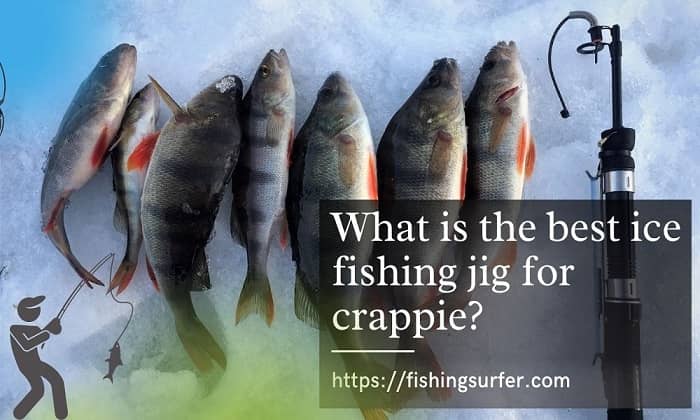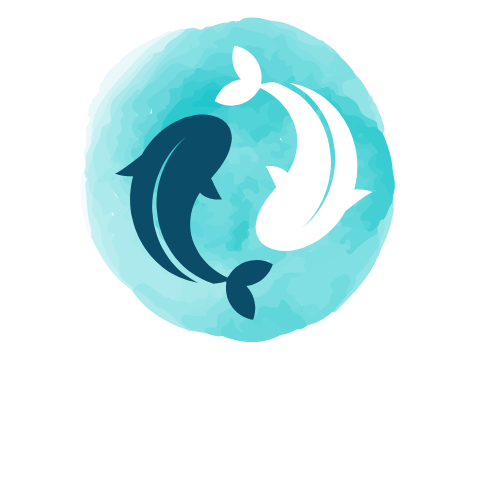If you’re a newbie to ice fishing and you live in a snowy area during the winter, it’s natural to think about getting the best ice fishing jig for crappie (among the other things you’d need). If you live in the US, chances are good there’s crappie out there. For panfish, crappie can get pretty big. That’s a good thing, because they sure taste nice. They even a good challenge for newbies, so ice fishing for crappie can help them gain much needed experience.

The Right Tackle First
Let’s just make sure that you already have the tackle best suited for ice fishing for crappie. Basically, if your gear is already set for panfish and other smaller game fish, you’re good to go.
That means you’re using a lightweight fishing rod, measuring maybe 30 to 36 inches long. Since crappie have rather thin tissue around the mouth, you’ll want your fishing rod to have a soft tip. To complete this, you’ll need a super-light reel as well.
As for your line, try a 4-pound fluorocarbon line. If you’re somewhat more experienced, then you may want to go with a braided line like a 10-pound test. You just need to know how to attach a 3-foot fluorocarbon leader to the braid. You can use a swivel or a snap swivel for this, so it’s easier to change the leader and to prevent twisting your line.
Finally, you need the #8 hook or maybe the #4 hook for the bigger crappie. Add your floats and split shots, and then you can go look for your ideal ice fishing jig for crappie.
Lure Options for Crappie
You’ll find quite a wide range of choices to pick from when you’re going ice fishing for crappie. It’s best if you go with something made out of tungsten instead of lead, as lead isn’t all that environmentally friendly. The good news is that plenty of ice fishing jigs for crappie are made with tungsten.
In general, here are your options:
Small Jigs
You’ll want your jigs in a smaller size, as they really suit the type of food crappie go for and it’s also great for the way that crappie go for their prey. This option is especially ideal when you’ve cut a hole though the ice to go fishing.
The small jigs can go up and down or sideways. They can stay still at the bottom, or at the exact depth you want. Pick a jig that weighs 1/16 of an ounce if you’re fishing in deeper water (at least 20 feet), for shallower waters, pick from 1/32-ounce and 1/64-ounce.
This is most likely the best choice, but you may want to look over the other options to supplement these jigs.
Soft Plastics
When your jigs aren’t working, then maybe the soft plastics will. They have this enticing way of moving that really attracts the crappie’s attention. They really wave and wiggle around. You’ll have lots of shapes and features to pick from, as you’ll find soft plastics with eyes and tails, and appendages that resemble cilia.
Spoons
A spoon in the water can really mimic the appearance and movement of a scared or wounded shad or minnow. With the rattles and the concave sides of these spoons, they emit vibrations and flashes in the water that really catches the crappie’s eye. You’ll want small spoons with sizes of 1/8 or 1/16 of an ounce, though if the crappie are down deep, you’ll want something bigger and heavier.
Airplane Jigs
These present horizontally, with a rather unpredictable swimming motion due to the design of the wings and fins. They can really mimic baitfish that way. Use these with treble hooks, or even nose and tail hooks.
Using the Jig and Grub Combination
This is widely regarded as the best jig option for crappie, whether for ice fishing or for open waters. The tungsten jig heads give you the hook you need, along with the weight to weigh down your bait. Since these are generally made with tungsten, you’re able to use really lightweight jigs. With the grub bodies, you thread them on the jig head.
You’ll have several design options to choose from for your jig heads, but you should pay particular attention to the line tie placement. This line tie placement will determine the balance and reaction of the lure in the water.
As for the color of the jig heads, go with something bright and flashy. Bright colors are more able to catch the attention of your target crappie.
The grub bodies are also available in a wide variety of styles, shapes, colors, and sizes. Your best bet to pick correctly among them is to ask the experienced crappie ice fishers in the area as to which grub bodies work best.
But if you use a different one, that might work too. Some crappie can be rather curious, and bite at things they’ve never encountered before.
What about Live Bait?
Yes, this is a good alternative. In fact, you’ll find plenty of veteran anglers who swear by this option. The reasoning is quite simple: why go for artificial lures that mimic the real thing when you can use the real thing in the first place?
For crappie, the ideal live baits include minnows and worms like meal worms and wax worms. If you’re going fishing in deeper water, the minnows are your best bet. The wax worms and meal worms may be better if fishing around shallow grass.
One simple way to present the live bait is by tying your hook at the very end of the line, while 18 inches above it you have a small split shot.
Use a live minnow for bait, and you’re ready. Just hook the minnow at the back, right between the dorsal fin. Don’t hook it through the lips, as that just doesn’t work for ice fishing. You can set the minnow at the depth you want using a float, which also tells you when you’ve got something to reel in.
If you’re using meal warms and waxies, you can set them with the jig and grub combination, or on a bear head jig. Using an artificial lure with live bait can actually work well, because you get the best of both worlds. The lures often attract a lot of attention with their flash and movement, while the live bait tastes great for the crappie.
Crappie Ice Fishing in Shallow Waters
If you’re doing this in shallow lakes, you generally find your crappie in the weed beds at the bottom. That just makes sense because that’s where the crappie often find their food. You can just fish the jigs right over the tops of the weed bed. Your crappie will then eventually try to sprint of their cover to get to the jig. If you’re using a meal warmer wax worm with tiny jigs, you’ll do fine.
After hooking the crappie, you’ll have to keep the pressure on the fish steady and even. Don’t forget that there’s just a thin membrane at the side of the mouth of the crappie. Intermittent pressure and movement will cause the hook to create a bigger hole there. If there’s even some sort of slack, your jig will fall out.
You need a gentle touch when you reel your crappie in. Don’t pump the rod tip, and just take your time. Slow and steady wins the race when it comes to reeling in your crappie.
The main problem here is that the vegetation will eventually die off, and that means there won’t be any food for crappie there. The bait fish will just move elsewhere.
That means you should also consider the healthy vegetation in shallower water. The vegetation has the oxygen that the bait fish need, and that’s also where the crappie go.
Crappie Ice Fishing in Deep Lakes
You’ll find the schools of fish usually farther away offshore. The fish in open water tend to hang around some sort of structure, like a river or creek channel edge, rock piles, fallen timber, and underwater islands.
Admittedly, in open water it’s a lot more difficult to find the fish, which is why you should invest in a portable sonar unit. That way, you’re able to find the local structures and the fish around it.
Conclusion
Just keep in mind that finding the best ice fishing jug for crappie isn’t actually the most important consideration here. Like with many things in life, safety comes first. The slippery ice can cause you to fall and injure yourself. Don’t forget about the cold, either. You always read about some anglers who die each year due to exposure.
Still, if you play it safe and get the right equipment, ice fishing for crappie sure is fun. That’s especially true at dinner time, when you’re savoring your catch. Just use the best ice fishing jig for crappie to help make sure you’re doing it right!
